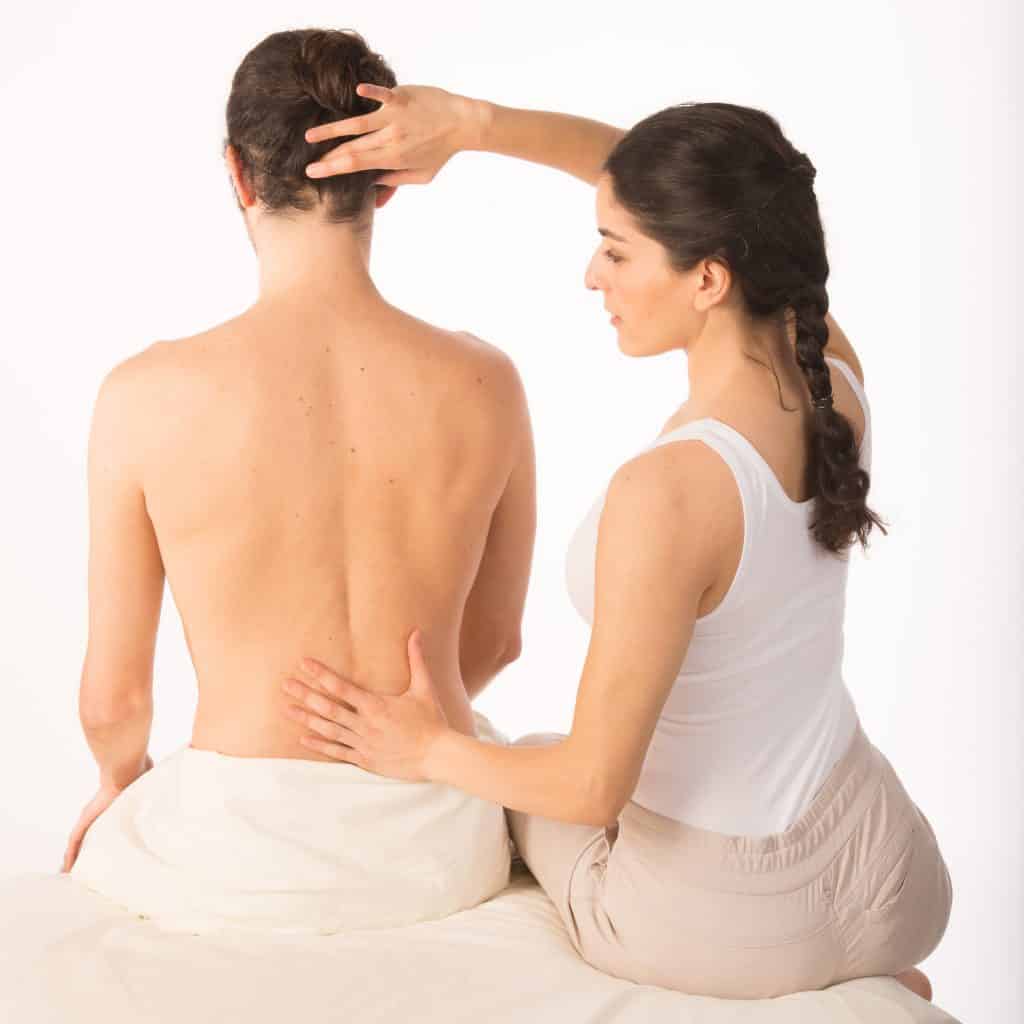5. Rolfing® can alleviate pain
Strain and discomfort in the body resulting from tensional imbalances and movement impairments can be relieved through Rolfing®. This is how back pain, painful tension in the neck and shoulders, headaches, as well as hip, knee, and foot discomfort can be alleviated and resolved; and, these improvements are mostly long-lasting.
6. Rolfing® improves proprioception (body perception)
Clients re-learn how to feel and experience their own bodies through Rolfing®. For example, they become aware of questions that they might never have asked themselves before:
How do I breathe?
How do I stand?
How do I sit?
How do I walk?
When do I pull up my shoulders?
How does my body react when I’m stressed?
Proprioceptive learning is promoted through the Rolfer’s manual work, verbal instructions and guided movements. However, clients participate actively throughout. Their newly gained body perception helps them be aware of, quickly identify and eliminate old movement habits. And, if they reappear, it is easier for clients to become aware and correct unfavorable posture or detrimental movements patterns. Thus, enhanced proprioception leads to increased body awareness, which is one key to Rolfing’s long-term beneficial effects.
7. Rolfing® has a positive effect on the mind
Body and mind cannot be separate. This becomes clear over and over during Rolfing sessions. Freer breathing and more opening of the rib cage also implies more openness towards our environment and other people. An increased feeling of stability and support through the ground provides enhanced sense of security and centeredness. Rolfing® clients report more energy overall, more balance in difficult situations, more self-assurance, and an ability to display their inner selves more confidently.
